
Ležáky, where are you walking?
Aneb konec odkazu architekta Žáka v Ležákách.
Psal year 1947. It was a sad anniversary commemorating the Ležáky tragedy. The foundation stone of the chapel for Ležáky was consecrated. In the autumn of the same year, excavations were conducted under the top of Zárubky hill. Four trenches were dug at the corners of a rectangular layout, and one trench was at the intersection of the diagonals. In 1948, architect Ladislav Žák and engineer Jiří Palička completed the project for the chapel for Ležáky. The vision that Žák presented in sketches back in 1946 was finalized. The project, difficult to compare in the Czech Republic and the world, was completed. A project was developed, the implementation of which was interrupted by the times, leaving behind only the gravestones of the murdered individuals, families, and destroyed houses. The gravestones are a tenth-scale model of the intended chapel featuring a transparent and airy cross penetrating the weight of the surrounding mass. Thus, the symbol that was meant to permeate the entire memorial landscape. Still captivating with its artistic and architectural value, and extraordinary spiritual dimension. Partly realized was what was originally meant to remain solely in the embrace of the landscape, to be a part of a natural temple without pubs, museums, and chapels underground. The holes in the ground at the Ležáky Golgotha or Calvary, covered by forest, survived the past regime and remain here to this day. They are silent witnesses to human limitations and foolishness. The holes in the ground at Zárubka are a mute reminder of the contemplated pilgrimage site.
Since 1948, the area has suffered from a lack of concept, with remnants of original ideas scattered throughout the territory being merely mutilated since then. The power of experience, intellectual simplicity, and consistency are fading; symbols are crumbling. Unfortunately, this is also shown by implementations in the area after 1989. The construction activity and its concept are analogous to the activities after 1948. People behave similarly in different times. Each era leaves behind a piece of its incoherence here in its best faith. The fact that Ležáky is a territory without a concept is evident in the competition for the Ležáky chapel and especially the assignment documentation itself. It is a text more for lawyers. The text encodes the responsibility and level of expertise of the Czech Chamber of Architects and Conservators. The area should primarily be cleansed, rid of things that do not belong to it, it should uncover and remind us of the lives of the people, which are still consumed by tree falls and forests. Sometimes less is more, but everyone has a need to leave marks behind, it doesn't matter under what regime.
I am not an advocate of returns and historicism in architecture. Nor of dusting off the past, but I recommend people to familiarize themselves with the original project. When they have more time, also with other projects for Ležáky. I cannot help but mention the placement of the chapel. The solution suggests itself. Moreover, many studios handled similar proposals on a similar principle. However, it’s not about building an inconspicuous structure hidden in the ground in a wrong place if possible. (I recommend getting acquainted with the socialist projects for the area.) From a construction-historical perspective on the development of the memorial area, I see it as a Christian and democratic point of artificial socialist composition that rooted original ideas and memorial landscape. The problem of the new chapel is the plan and building shape of what will be above ground with burial mounds. The chapel is placed in a socialist point de vue, an artificial viewing axis of the Ležáky valley, which emerged after the completion of the museum according to the project by Architect Driml from 1966 and was recently supported by insensitive strip clear-cutting or an opening for expected electrical lines. What axis did the original aggregation of houses in the Ležáky basin have? Was the conceptual confusion of the peculiar connection considered? What a pity, Mr. Architect Žák.
The former chapel was not only architecturally but especially symbolically and intellectually entirely about something else.
What is Žák's chapel? The chapel is a memorial to the murdered, a place for the crypt with the storage of their ashes. The sarcophagus, or tumba, was located in the center of the memorial in the axis of the construction under the altar of the chapel.
However, the chapel is primarily a sanctuary; it is the altar of the natural open temple hall at the summit of Zárubka! It represents, in fact, the archetype of the chapel and altar; it is much closer to the landscape and Christian traditions than the competition chapel submerged in the ground. (In this regard, it's worth looking at Žák's solution connecting the chapel with the exterior). Žák's chapel is an altar that descended in the form of individual gravestones into the valley. It is a place for meeting God under the open sky in the temple of the landscape.
A symbol of Christianity permeates the valley, culminating in the chapel on Ležáky Golgotha. Žák's chapel is designed simply and convincingly, with maximum consideration for the attributes of the Christian faith. How outdated are these values today? The chapel was a place for worship services and church ceremonies. The Ležáky Calvary was to be a place for national pilgrimages. Does the new chapel anticipate that on the solemn anniversary of June 24, 1942, there would be a service held here for several hundred people, so that it would not have to be held at the pub and the museum?
Neither time nor the forest-grown Zárubka has diminished the relevance of the proposal's ideas. Perhaps quite the opposite. Žák's solution connects the plane of remembrance of the dreadful events with the strength of the environment. Thus not the need for meditation praised by the competition jury somewhere in an intimate enclosed environment underground, but in the environment of a natural temple, broadly translating the entire memorial landscape. Therefore, any intervention in the landscape should be perceived so sensitively and considered carefully. This was demanded almost pedantically by Žák. I dare say that Žák would never have placed the chapel in the Ležáky valley. The timelessness and simplicity of original ideas and remnants of the memorial landscape perhaps lie exactly in the fact that the ideas were not digestible for the communists and are not digestible even after 63 years for today’s consumer society and its needs for meditation. One cannot simply leave the memory of the tragedy merely printed and deeply rooted in the landscape.
The uniqueness of the place has faded away. Ležáky may one day be commemorated like Lidice. The memorial landscape is disintegrating; the author remains misunderstood (a word that can be read back and forth without getting tired).
Through the window of the airy cross, one can see the pub, the museum, ten types of information systems, ten types of urban furniture, the irreverence of the execution, and the diversity of construction details, inappropriate paths and their material execution, a disproportionate pyramid in the valley from 1960, inappropriate state of vegetative elements, inappropriate clearings and cultivation interventions, a new melioration channel for the drainage of water from the pond . . . . . and one will also see the new chapel shining into the valley. Another contribution to incoherence? Maybe over time a hotel connected with some gallery will be added. From the memorial landscape that needs cleansing, it is slowly becoming a commercially memorial Disneyland with experiences that must fit into the short moment of a visit.
The natural and vegetative component of the memorial landscape still remains marginalized. Man has imprinted himself into the landscape through his activities. Over the course of history, through his life journey and the generations of his ancestors, he left traces here. Poorly maintained and neglected landscape heritage is on the brink of collapse. The memory of the people, their work, lives, and what truly remains after them is on the verge of destruction. In erasing his traces and cultural heritage, man has not even allowed nature to develop sustainably in the landscape. With his attitude, he makes a cripple of both nature and his heritage. In the falls of aspens, the last remnants of stone walls, arranged according to the original boundaries of the land, the edges of fields and meadows, are disintegrating. Grazing lands, meadows, fields, paths, hedgerows, and other landscape-forming elements of original life are disappearing in clearings. The mute memory, silent witnesses of the times of original life and lively landscape are dissolving. Human fates and stories are disappearing from the landscape. It is necessary to digitize the cadastre and change the cadastral data. The entire land map is outdated, with areas for extraction right in the national cultural monument environment!
I wish many perceptive people to the memorial landscape and Žák's legacy. The competition has confirmed to me that ignorance of the place and the past contexts is ideal for project design.
a note at the end
In misunderstanding, the form of the memorial area is closing. By a twist of fate and irony, the then Society for the Renewal of Lidice was at the origin of Žák's realization, meaning what was achieved from the original intent and what the communists did not destroy with their "chapels." Today's memorial to Lidice, which manages the area, marks the end of one concept, it marks the end of what remains of Žák. If somewhere in the evaluation of the proposals for the chapel Žák's concept is mentioned, perhaps the jury members don't even know what they are talking about. Žák was degraded to a mason, to the author of Ležáky gravestones in an environment that is increasingly distancing and alienating from the original idea, simplicity, and spiritual strength of experience. The remains of what has been realized, which today can also be viewed as cultural heritage, find themselves in a hostile landscape. The memorial to Lidice is among other things a contributory organization of the Ministry of Culture of the Czech Republic.
project documentation by Ladislav Žák is stored at:
State Regional Archive in Prague, SOkA Kladno, nám. Starosty Pavla 11, 272 01 Kladno
NPÚ ÚOP Pardubice, Zámek 4, 531 16 Pardubice
National Technical Museum, Kostelní 42, 170 78 Prague 7
V. Koupal
+420 731 056 510
[email protected]
Since 1948, the area has suffered from a lack of concept, with remnants of original ideas scattered throughout the territory being merely mutilated since then. The power of experience, intellectual simplicity, and consistency are fading; symbols are crumbling. Unfortunately, this is also shown by implementations in the area after 1989. The construction activity and its concept are analogous to the activities after 1948. People behave similarly in different times. Each era leaves behind a piece of its incoherence here in its best faith. The fact that Ležáky is a territory without a concept is evident in the competition for the Ležáky chapel and especially the assignment documentation itself. It is a text more for lawyers. The text encodes the responsibility and level of expertise of the Czech Chamber of Architects and Conservators. The area should primarily be cleansed, rid of things that do not belong to it, it should uncover and remind us of the lives of the people, which are still consumed by tree falls and forests. Sometimes less is more, but everyone has a need to leave marks behind, it doesn't matter under what regime.
I am not an advocate of returns and historicism in architecture. Nor of dusting off the past, but I recommend people to familiarize themselves with the original project. When they have more time, also with other projects for Ležáky. I cannot help but mention the placement of the chapel. The solution suggests itself. Moreover, many studios handled similar proposals on a similar principle. However, it’s not about building an inconspicuous structure hidden in the ground in a wrong place if possible. (I recommend getting acquainted with the socialist projects for the area.) From a construction-historical perspective on the development of the memorial area, I see it as a Christian and democratic point of artificial socialist composition that rooted original ideas and memorial landscape. The problem of the new chapel is the plan and building shape of what will be above ground with burial mounds. The chapel is placed in a socialist point de vue, an artificial viewing axis of the Ležáky valley, which emerged after the completion of the museum according to the project by Architect Driml from 1966 and was recently supported by insensitive strip clear-cutting or an opening for expected electrical lines. What axis did the original aggregation of houses in the Ležáky basin have? Was the conceptual confusion of the peculiar connection considered? What a pity, Mr. Architect Žák.
The former chapel was not only architecturally but especially symbolically and intellectually entirely about something else.
What is Žák's chapel? The chapel is a memorial to the murdered, a place for the crypt with the storage of their ashes. The sarcophagus, or tumba, was located in the center of the memorial in the axis of the construction under the altar of the chapel.
However, the chapel is primarily a sanctuary; it is the altar of the natural open temple hall at the summit of Zárubka! It represents, in fact, the archetype of the chapel and altar; it is much closer to the landscape and Christian traditions than the competition chapel submerged in the ground. (In this regard, it's worth looking at Žák's solution connecting the chapel with the exterior). Žák's chapel is an altar that descended in the form of individual gravestones into the valley. It is a place for meeting God under the open sky in the temple of the landscape.
A symbol of Christianity permeates the valley, culminating in the chapel on Ležáky Golgotha. Žák's chapel is designed simply and convincingly, with maximum consideration for the attributes of the Christian faith. How outdated are these values today? The chapel was a place for worship services and church ceremonies. The Ležáky Calvary was to be a place for national pilgrimages. Does the new chapel anticipate that on the solemn anniversary of June 24, 1942, there would be a service held here for several hundred people, so that it would not have to be held at the pub and the museum?
Neither time nor the forest-grown Zárubka has diminished the relevance of the proposal's ideas. Perhaps quite the opposite. Žák's solution connects the plane of remembrance of the dreadful events with the strength of the environment. Thus not the need for meditation praised by the competition jury somewhere in an intimate enclosed environment underground, but in the environment of a natural temple, broadly translating the entire memorial landscape. Therefore, any intervention in the landscape should be perceived so sensitively and considered carefully. This was demanded almost pedantically by Žák. I dare say that Žák would never have placed the chapel in the Ležáky valley. The timelessness and simplicity of original ideas and remnants of the memorial landscape perhaps lie exactly in the fact that the ideas were not digestible for the communists and are not digestible even after 63 years for today’s consumer society and its needs for meditation. One cannot simply leave the memory of the tragedy merely printed and deeply rooted in the landscape.
The uniqueness of the place has faded away. Ležáky may one day be commemorated like Lidice. The memorial landscape is disintegrating; the author remains misunderstood (a word that can be read back and forth without getting tired).
Through the window of the airy cross, one can see the pub, the museum, ten types of information systems, ten types of urban furniture, the irreverence of the execution, and the diversity of construction details, inappropriate paths and their material execution, a disproportionate pyramid in the valley from 1960, inappropriate state of vegetative elements, inappropriate clearings and cultivation interventions, a new melioration channel for the drainage of water from the pond . . . . . and one will also see the new chapel shining into the valley. Another contribution to incoherence? Maybe over time a hotel connected with some gallery will be added. From the memorial landscape that needs cleansing, it is slowly becoming a commercially memorial Disneyland with experiences that must fit into the short moment of a visit.
The natural and vegetative component of the memorial landscape still remains marginalized. Man has imprinted himself into the landscape through his activities. Over the course of history, through his life journey and the generations of his ancestors, he left traces here. Poorly maintained and neglected landscape heritage is on the brink of collapse. The memory of the people, their work, lives, and what truly remains after them is on the verge of destruction. In erasing his traces and cultural heritage, man has not even allowed nature to develop sustainably in the landscape. With his attitude, he makes a cripple of both nature and his heritage. In the falls of aspens, the last remnants of stone walls, arranged according to the original boundaries of the land, the edges of fields and meadows, are disintegrating. Grazing lands, meadows, fields, paths, hedgerows, and other landscape-forming elements of original life are disappearing in clearings. The mute memory, silent witnesses of the times of original life and lively landscape are dissolving. Human fates and stories are disappearing from the landscape. It is necessary to digitize the cadastre and change the cadastral data. The entire land map is outdated, with areas for extraction right in the national cultural monument environment!
I wish many perceptive people to the memorial landscape and Žák's legacy. The competition has confirmed to me that ignorance of the place and the past contexts is ideal for project design.
a note at the end
In misunderstanding, the form of the memorial area is closing. By a twist of fate and irony, the then Society for the Renewal of Lidice was at the origin of Žák's realization, meaning what was achieved from the original intent and what the communists did not destroy with their "chapels." Today's memorial to Lidice, which manages the area, marks the end of one concept, it marks the end of what remains of Žák. If somewhere in the evaluation of the proposals for the chapel Žák's concept is mentioned, perhaps the jury members don't even know what they are talking about. Žák was degraded to a mason, to the author of Ležáky gravestones in an environment that is increasingly distancing and alienating from the original idea, simplicity, and spiritual strength of experience. The remains of what has been realized, which today can also be viewed as cultural heritage, find themselves in a hostile landscape. The memorial to Lidice is among other things a contributory organization of the Ministry of Culture of the Czech Republic.
project documentation by Ladislav Žák is stored at:
State Regional Archive in Prague, SOkA Kladno, nám. Starosty Pavla 11, 272 01 Kladno
NPÚ ÚOP Pardubice, Zámek 4, 531 16 Pardubice
National Technical Museum, Kostelní 42, 170 78 Prague 7
V. Koupal
+420 731 056 510
[email protected]
The English translation is powered by AI tool. Switch to Czech to view the original text source.

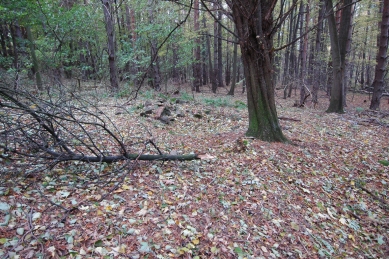
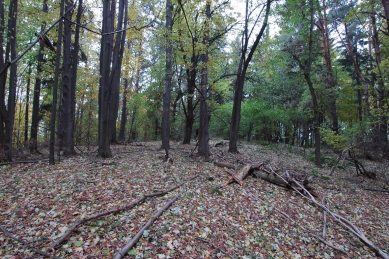
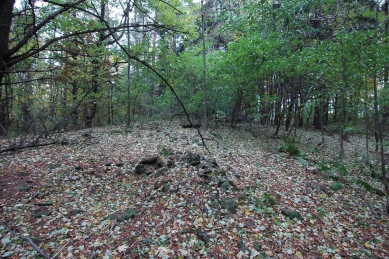
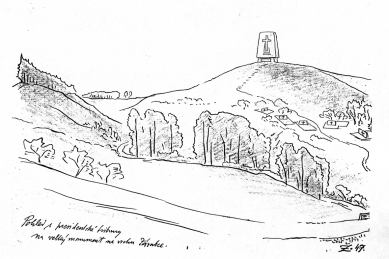
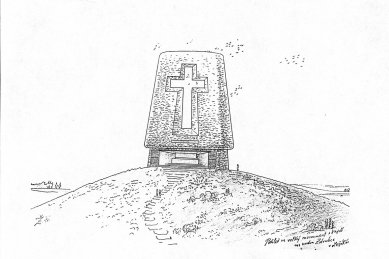
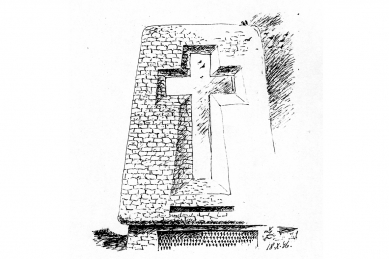



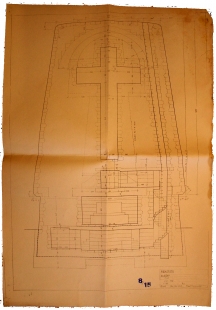
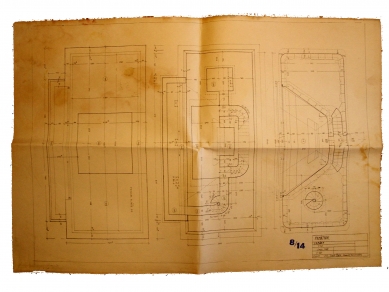
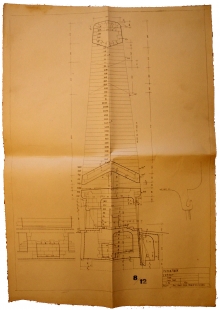
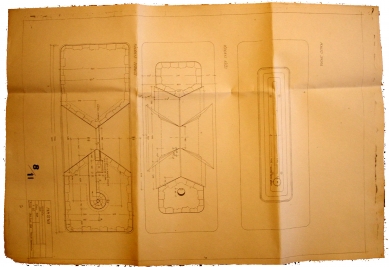
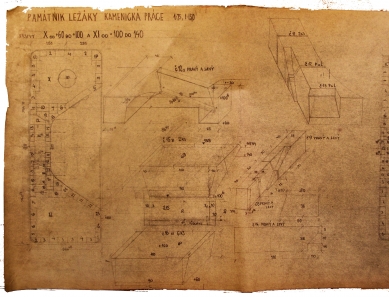
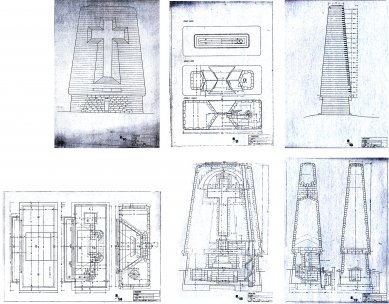
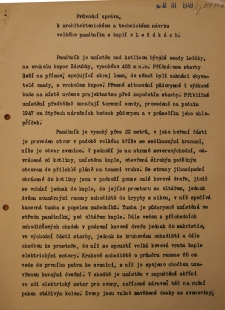

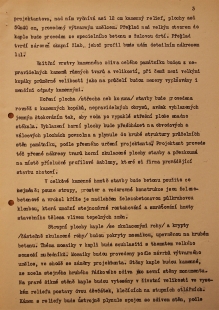
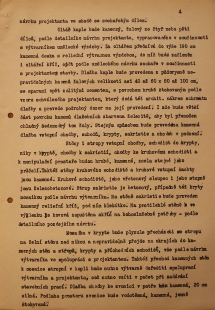
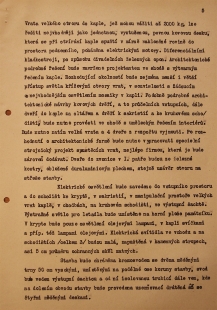
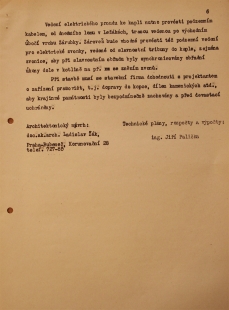
4 comments
add comment
Subject
Author
Date
!!!
Tomáš Vích
12.12.11 09:36
KONTINUITA JAKO KONTEXT?
jakub chvojka
13.12.11 11:09
Na co byla soutez?
takyarchitekt
14.12.11 12:43
Co na to experti?
Vích
30.12.11 03:13
show all comments










